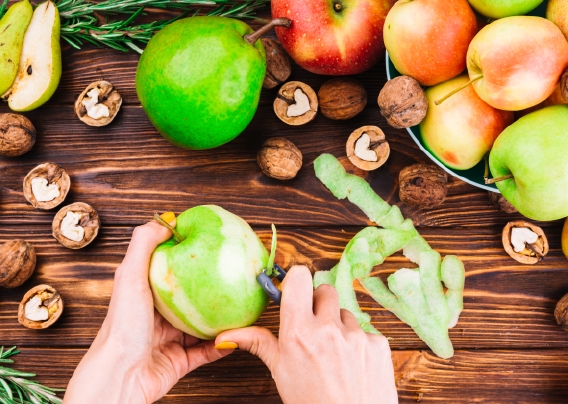
Brazil, the country of waste.
We throw away 20% of the natural resources that should be on our tables. The unconventional parts of food, seen as garbage, are, on numerous occasions, those that have more nutrients for the body.
Currently the production of food in the world is enough to feed the entire population of the planet! But on the contrary, the scenario we see is one starving every 3.5 seconds in the world! According to the Brazilian Institute of Geography and Statistics (IBGE), this occurs because about 30% of food production is lost in the harvest, transportation, storage and commercialization processes. Another factor that further aggravates this picture is that we produce the world's richest and most nutritious garbage! Brazil is considered the country of waste, throwing away 20% of the natural resources that should be on our tables.
The state of health of the human being depends directly on food and the lack of knowledge of the nutritional principles of food, in addition to the lack of use as a whole, leads to the waste of tons of food resources. The unconventional parts of food, seen as garbage, are, on numerous occasions, those that have more nutrients for the body. Fruit peels generally have a greater amount of fiber, minerals and vitamins when compared to fruit pulps themselves. The stalks of vegetables act as excellent antioxidants, as well as help prevent anemia, constipation and many chronic degenerative diseases such as diabetes, hypercholesterolemia and hypertension.
This conscious consumption is essential for man and the environment, both in the nutritional and economic aspects, but mainly in the sense of "ecologically correct". The environmental impact can and should be reduced by the full use of food, because when they are disposed of inappropriately in the environment, they cause serious and irreversible consequences of contamination of soil, rivers and groundwater.
We can use these unconventional parts in the preparation of various recipes, but for this, great care must be taken with the hygienic conditions. Therefore, institutions such as SESC, SENAC, SESI, SENAI and SEBRAE federal government agencies - ANVISA, EMBRAPA and CNPq - have developed the Safe Food Program (PAS), which disseminates tools capable of promoting this solution to waste, ensuring safety food and nutrition.
From these considerations, recipes have been developed that give rise to tasty, healthy, nutritious and economical dishes. The following foods are present in this list of "unconventional food parts".
- Leaves: sweet potato, beet, carrot, cauliflower, jerimum, turnip, mustard and radish;
- Peels: pineapple, banana, potato, sweet potato, eggplant, beet, guava, orange, apple, papaya, mango, passion fruit, melon, cucumber, tangerine;
- Talos: watercress, beet, broccoli, kale, cauliflower, spinach;
- Entrecascas (white pulp) watermelon, passion fruit;
- Seeds: pumpkin, melon, jackfruit.
Just creativity to enrich your dishes nutritionally and contribute to the environment. How about starting to save the stalks of vegetables and prepare a healthier pancake?
By Andreia Cristina. Master in Food and Nutrition - CRN 3/19360. Originally published in Bora Magazine, Praia da Pipa - Issue 12 - Jun / Jul 2015
Green Pancake Recipe
Ingredients
Pasta:
1 cup of stems and leaves (watercress, beetroot, carrot, kale, spinach ...) cut and cooked • 1 cup milk • 2 eggs • 1 cup of wheat flour (if you prefer can use whole-wheat flour or oatmeal) • 1 pinch of salt
Filling:
1 tablespoon oil • 1 onion, chopped • 2 cloves garlic, chopped • 3 cups of well-washed chopped stems and leaves • 500 grams of ground beef or shredded chicken • Salt and seasonings to taste.
Method of preparation
Pasta:
Place the stems in the blender, add the milk, eggs and beat until the mixture becomes homogenous. Add the flour, salt and set aside. Grease the skillet with a little oil and put the dough in the pan, spreading well and let the frying on both sides.
Filling:
Spread onion and garlic. Then sauté the meat of your choice. Add stalks. Add the seasonings, cover the pan and cook enough to soften the stalks a bit. Now just stuff the pancakes and serve.







 ESPAÑOL
ESPAÑOL
 PORTUGUES
PORTUGUES